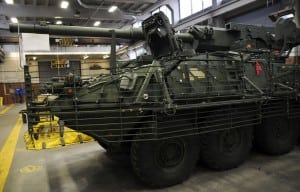
The Senate Thursday morning passed an amendment to the 2016 defense authorization bill that adds $371 million for Stryker armored vehicle lethality upgrades.In a 61-34 vote, lawmakers agreed to authorize funding to replace the 50 caliber machine guns on vehicles with 30mm cannons. The amendment, offered by Sen. Rob Portman (R-Ohio), sets aside $314 million for procurement and $57 million for research, development, test and evaluation. That sum would be offset by anticipated foreign currency gains. The Army in 2013 moved…













